Eyes in Google's Daydream View
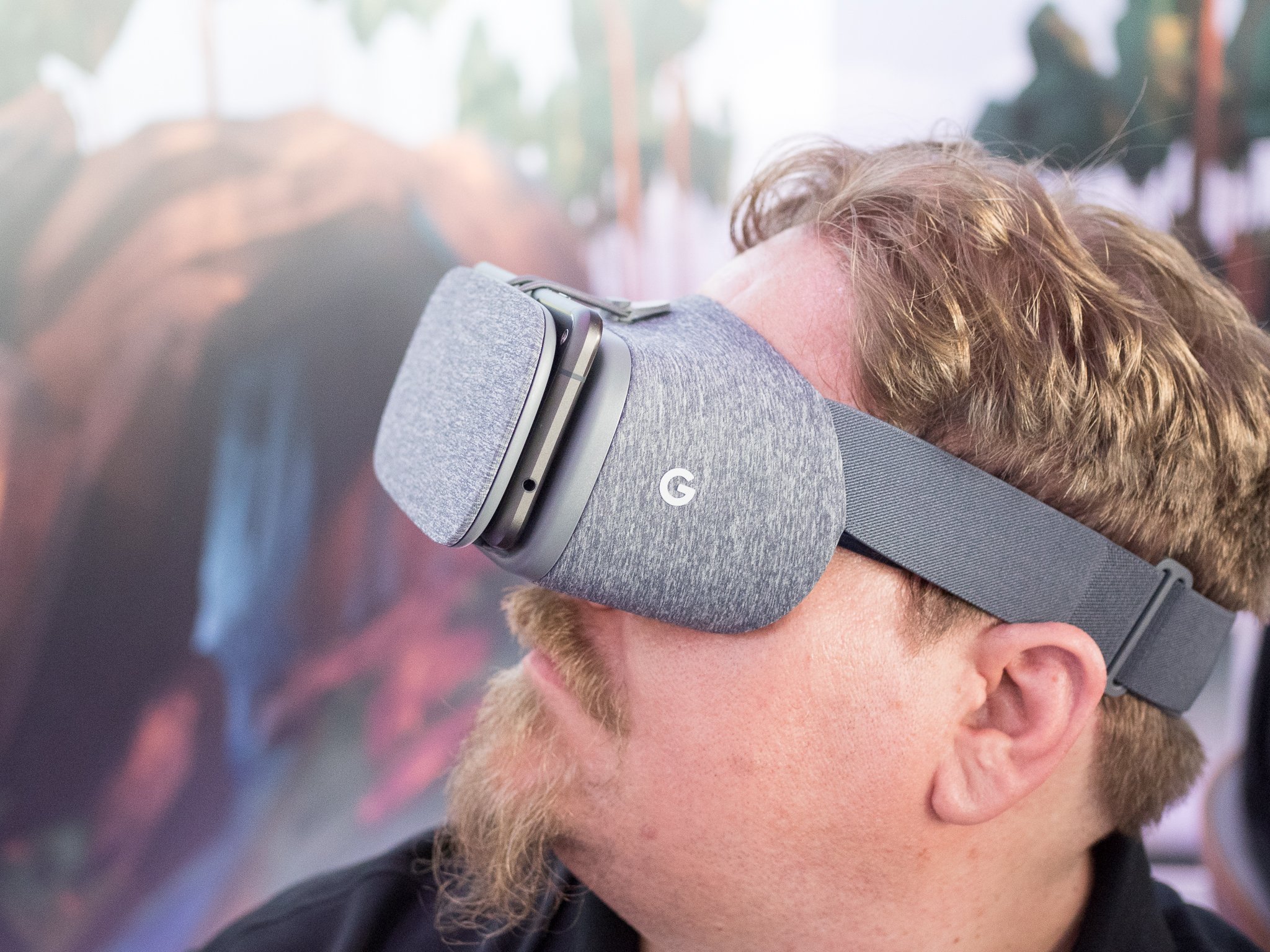
There are two types of people when it comes to smartphone-based VR — those who are eagerly awaiting what comes next and those who have never tried any of it. Google Cardboard is a great way to see something quick in a 360-degree peek, but it's not good for long-term use. Samsung's Gear VR is more capable, but limited only to Samsung phones. At Google I/O this year, Daydream was announced as the thing that happens next in smartphone-based VR by creating a higher quality platform with a new headset and controller system.
Alongside the launch of the Pixel phones, Google also unveiled Daydream View. It's the first headset designed specifically for phones Google approves as "Daydream Ready" in order to offer a more complete VR experience. After an extended period of time in the headset, it's clear Google has created something well above the experiences so many have had with Cardboard.
Comfort first, with some style
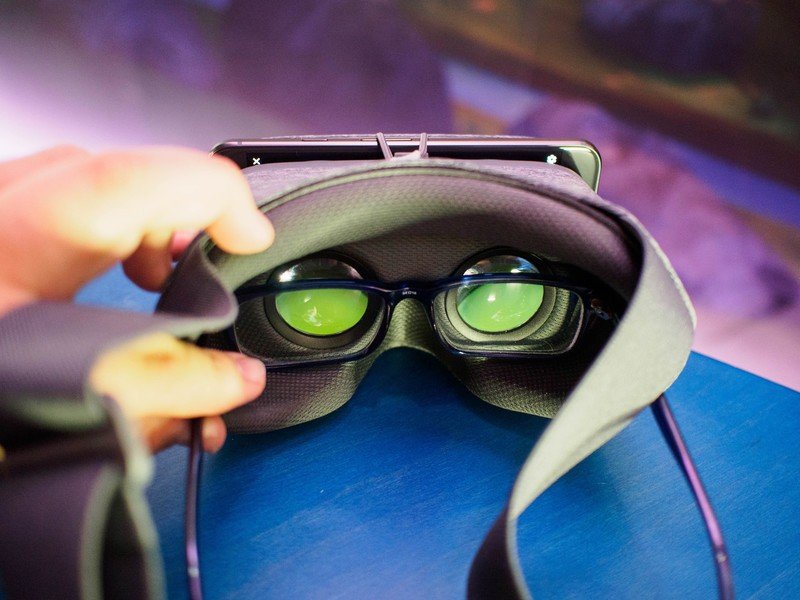
Daydream View looks a lot like a highly stylized Google Cardboard headset. It's a set of lenses in a casing with a strap on one side for your head and a strap on the other side to hold your phone in place. There are no buttons, no trackpads, and no ports to dock your phone. Instead of a plastic exterior, Daydream View is covered in several kinds of fabric. Google's Clay Bavor explained the material was a combination of microfiber cloth and the kind of material you find in workout clothes. The overall goal is to encourage airflow and decrease that gross, sweaty feeling when you're in some VR headsets for a while. Somewhere in that process, Daydream View came out looking kind of like sweatpants. Really nice sweatpants though, and in three colors —Slate, Snow, and Crimson.
A fair bit of light can leak in from both sides if you're in a brightly lit room.
The important parts of this fabric-covered headset are the parts that touch you when you wear it. The strap is unique, a single band with a pair of clips so you can quickly tighten or loosen the strap with a press and pull. No other VR headset has a fabric strap this easy to use, and it's complimented well by the cushiony texture that fits around your eyes. Instead of creating a seal, the cushion across your forehead and down across your nose are extended beyond the profile of your face. This means the headset can accommodate people who need to wear prescription glasses inside a VR headset, but it also means a fair bit of light can leak in from both sides if you're in a brightly lit room. This may be a worthwhile tradeoff for those who wear glasses and those who aren't a fan of lenses fogging up, but it also means the color of your phone could cause some reflection issues inside the headset.
Daydream View is light even by smartphone-based VR headset standards. With a Pixel XL onboard it was noticeably lighter than the Samsung Gear VR with a Note 7, and quite a bit more comfortable than any other phone VR kit available today. The design appears simple, but really it's the result of two years practice by other companies in getting the headset design wrong. Fortunately for everyone, this headset isn't tied to any one phone so many can enjoy it.
A tiny, capable controller
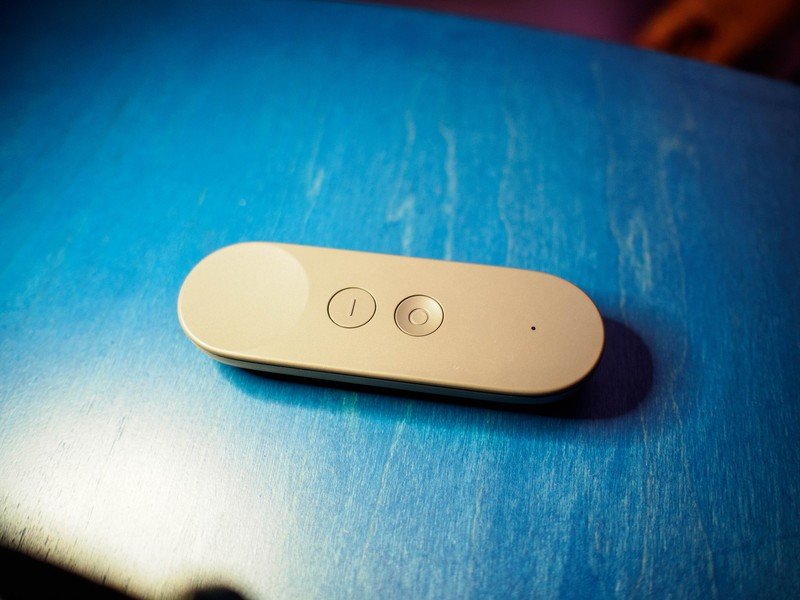
Opening Daydream View reveals a small controller, something that looks like it would be used to control a Roku TV. The Daydream Controller is special though, and it's a big part of what makes Daydream special. This controller can track movement across several axis, making it so you can rotate the controller in your hand and have those motions appear in Daydream. You can point the controller like a laser pointer and select things from menu options, which is a great deal more convenient than pointing with your face and waiting for a loading bar to complete in order to make a selection.
Daydream Controller represents your Wizard's Wand in the Fantastic Beasts and Where to Find Them demo for Daydream, and it's here that you get an appreciation for just how capable this controller is. The controller can't tell how far it is from the ground, so the wand is in a fixed position next to your head. As you point with your controller, the wand selects things and brings them to you to examine. Once you locate a spell to try, a quick flick of the wrist sends sparks flying from the tip of the wand. These movements are tracked with remarkable accuracy, feeling almost like you're using a tiny HTC Vive controller at times.
Be an expert in 5 minutes
Get the latest news from Android Central, your trusted companion in the world of Android
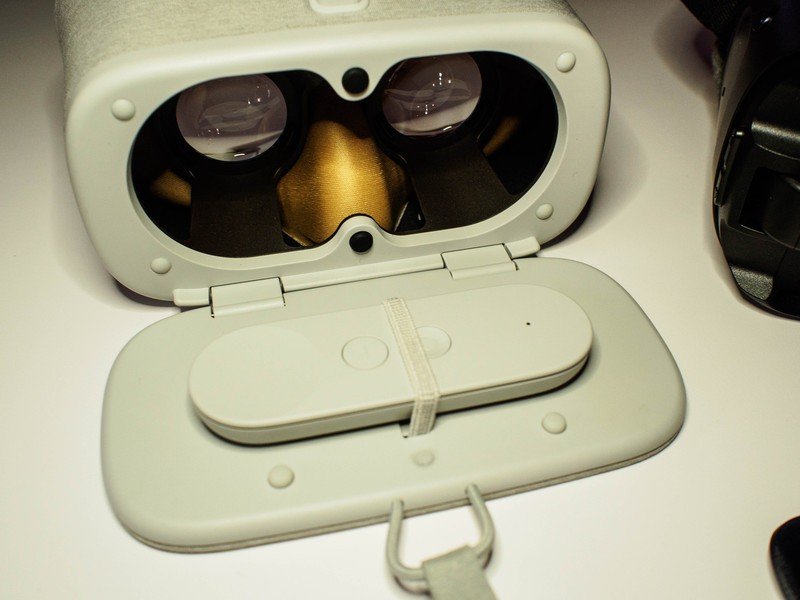
The lack of full spatial awareness is a challenge, but one Google's partners seem eager to face. During a tilt game demo, the whole board turned as you rolled the controller around, making accuracy very important. This is the kind of experience where spacial awareness matters a lot less, and the illusion created by your environment is much easier to hold.
Sometimes you just want to kick back and watch something though, and that is what Daydream Controller does best. No reaching up and tapping the side of your head or fumbling around for a gamepad here, your controller allows you to quickly navigate menus and pause when necessary. The volume buttons on the side of the controller help you get the experience you want, and the home button at the bottom lets you quickly return to the main menu if you're finished with what you are doing. It's a solid system, and as far as smartphone-based VR goes it's without equal.
A solid challenger
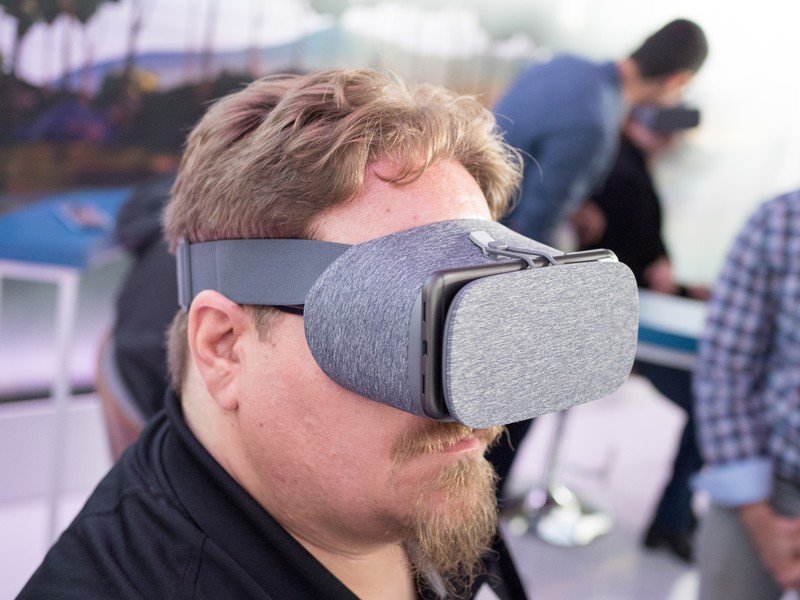
There's a lot of promise in a platform like Daydream. Google's first efforts with the Pixel XL created an experience with little of the "screen door effect" that plagues other VR headsets, and head tracking is a dream. Even the setup process is convenient — you place the phone down on the pad in the casing and an NFC tag launches Daydream and pairs you with the controller. When you close your phone against the lenses, alignment happens immediately with no QR codes to scan to make sure you have the best lens form on the display.
Everyone with a Pixel can enjoy something new and great.
The big question here is how any of this is different from Cardboard, and the answer to that is in the system itself. Head tracking is much smoother, the menu system feels like it could compete with the likes of Oculus Rift, and the content is much more dynamic. This happens because Google can control which phones get Daydream by making sure 60FPS animations are a default and the displays are all tuned in the same way. More accurate sensors for more accurate head tracking means the chances of you getting sick in VR decreases significantly, and the controller completes the experience by offering a dynamic pointer and video game stick. It's not that a lot of this couldn't be done with a Pixel XL and Cardboard with a strap, but the overall experience matters here and that only happens when all of these little pieces come together.
With this $79 headset on the way, Google's next big hurdle is content. The starting selection, which includes HBO and Netflix among several high quality games, is impressive but still on the small side. With developer tools making it fairly easy to port VR projects from one platform to another, it's likely this won't be a problem for long and that's a very good thing. By the time the next Daydream Ready phone is around, there's likely to be quite a bit more to do. In the mean time, everyone with a Pixel can enjoy something new and great.

